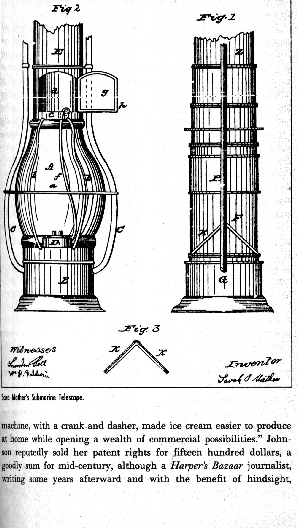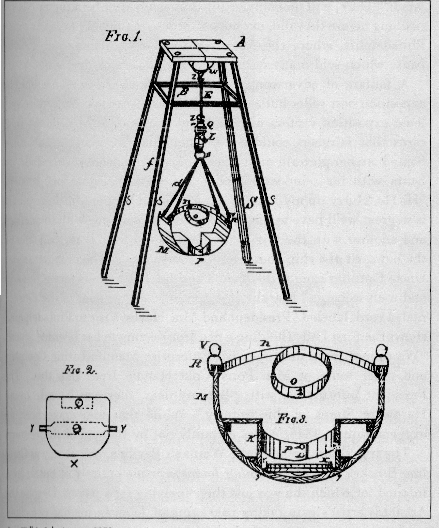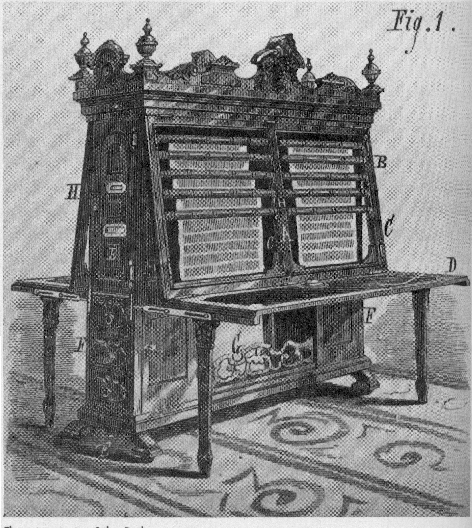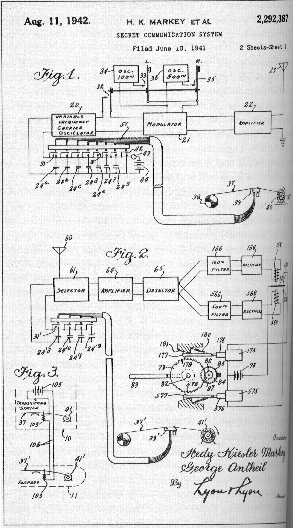WOMEN INVENTORS
- SYBILLA MASTERS (died 1720). Corn processing. In 1715, the British government acknowledged that Masters, an American colonist, had created a new way "for cleaning and
curing the Indian corn growing in several colonies in America."
- MARY DIXON KIES (early 19th century). Straw and silk weaving. The first patent granted to a woman by the U.S. Patent Office was given in 1809 to Kies, of Connecticut, for a method of weaving straw with silk. Straw weaving was an economically vital industry in America during the 1800s. Most women then wore bonnets, especially for work in the fields.
- SARAH MATHER, in 1845,
 patented a submarine lamp and telescope for divers.
patented a submarine lamp and telescope for divers.
- ELLEN EGLIN (late 19th century). Clothes wringer. Eglin, a black resident of the District of Columbia, invented a highly successful clothes wringer in the 1880s but did not patent it.
In 1888, she sold her wringer to an agent for a mere $18.
- MARTHA COSTON
 examined notes of her deceased husband for a military pyrotechnic night signal. Coston discovered how to make it work; designed and produced it; patented it in 1871.
examined notes of her deceased husband for a military pyrotechnic night signal. Coston discovered how to make it work; designed and produced it; patented it in 1871.
- MARGARET KNIGHT (1838-1914)
 Paper bag production. A cotton mill worker from age 9 through her late teens, Knight designed a machine that folded and glued paper to form the brown paper bags familiar today. She built a wooden model of the device, but needed a working iron model to apply for a patent. However, a man working in the machine shop where Knight's iron model was being built stole her design and patented the invention. Knight filed a successful patent interference lawsuit and was issued the patent in 1870. With a Massachusetts businessman, she established the Eastern Paper Bag Co. and received royalties. Knight received patents for several industrial machines, including a rotary engine. Her original machine (seen ab0ve) is in the Smithsonian Museum.
Paper bag production. A cotton mill worker from age 9 through her late teens, Knight designed a machine that folded and glued paper to form the brown paper bags familiar today. She built a wooden model of the device, but needed a working iron model to apply for a patent. However, a man working in the machine shop where Knight's iron model was being built stole her design and patented the invention. Knight filed a successful patent interference lawsuit and was issued the patent in 1870. With a Massachusetts businessman, she established the Eastern Paper Bag Co. and received royalties. Knight received patents for several industrial machines, including a rotary engine. Her original machine (seen ab0ve) is in the Smithsonian Museum.
- JANE WELLS
 invented the popular baby-jumper. Patented in 1872.
invented the popular baby-jumper. Patented in 1872.
- ELIZABETH STILES
 invented a prize-winning flexible library desk for the Ladies Christian Association of Philadelphia. Folded, it was only 18 inches deep, 6 feet wide, 7 feet high. Unfolded to a depth of 7 feet with adjustable tiltable tables (with inkpots on stabilizing pivots), small closets, shelves, drawers, racks, 26 pigeon-holes, wastebasket, display space on top for busts and library ornaments.
invented a prize-winning flexible library desk for the Ladies Christian Association of Philadelphia. Folded, it was only 18 inches deep, 6 feet wide, 7 feet high. Unfolded to a depth of 7 feet with adjustable tiltable tables (with inkpots on stabilizing pivots), small closets, shelves, drawers, racks, 26 pigeon-holes, wastebasket, display space on top for busts and library ornaments.
- MARY WALTON (late 19th century). Anti-pollution devices. In 1879, Walton developed a system that bubbled factory smoke emissions through water tanks that retained the chemicals, then
flushed them into the city's sewage system. In 1891, she received another patent for an apparatus that reduced noise from elevated train tracks by surrounding the rails with a wood frame that was cotton-lined, painted with tar and filled with sand. These materials absorbed noisy vibrations
of passing trains.
- BEULAH LOUISE HENRY (born 1887). Henry, who received her first patent at age 25 for an ice cream freezer with a vacuum seal was such a prolific inventor that the media and the Patent Office dubbed her "Lady Edison." Experts disagree on how many patents Henry held, but she is
thought to have created hundreds of items, some of which were were not patented or were sold to corporations, most notably toy and doll manufacturers, patenting dolls and other movable toys that could kick, blink, eat and even talk. Her company manufactured the popular umbrella she invented. It had detachable, snap-on covers in colors that could be interchanged.
- KATHERINE BLODGETT (1898-1979). Nonreflecting Glass. In 1917, Blodgett was the first female scientist hired at General Electric's research lab. Blodgett developed a practical application of
"invisible" glass, cutting reflected glare. This invention allowed images to pass through
eyeglasses, telescopes, cameras, periscopes and microscopes without distortion or loss of light.
Included in spin-offs: de-icing of aircraft wings, artificial rainmaking and increasing effectiveness of smoke screens.
- MARJORIE JOYNER (1896-1994). In 1928, Joyner was granted a patent for a machine that would
"wave the hair of both white and colored people." The machine was electrically powered and had wires, cords and clamps that attached to the hair from an overhead, suspended dome.
- HEDY LAMARR (born 1913). In 1942, Lamarr and composer George Antheil received a patent for a communications system which employed a feature known as frequency hopping. A radio signal, such as those used to direct torpedoes, would "hop" from one broadcast frequency to another at certain intervals. Therefore, if a receiver was not synchronized to receive the entire signal, the signal could not be "jammed" nor deciphered. Lamarr's system was never used during World War II, but long after her patent expired, the Sylvania Corp. adopted and further developed the idea. (Lamarr's patent was in her current married name, "Hedwig Keisler Markey".)

- RUTH HANDLER (born 1917). As cofounder of Mattel Toy Corp., Handler created Barbie, the
world's most famous doll. But when Handler lost a breast to cancer in 1970, founded Ruthon Corp. with the designer of a prototype breast prosthesis and developed the "Nearly Me" prosthesis, which is more realistic than previous models.
- GERTRUDE BELLE ELION (born 1918).
 The first woman inducted into the National Inventors Hall of Fame, Elion is named on 45 patents, most notably for discoveries of medicines that fight leukemia, gout and herpes and a drug that suppresses the immune system, helping the body to accept transplanted tissue. She won the Nobel Prize for Medicine in 1988 for her work with colleague George Hitchings and researcher Sir James Black. (Above foto shows Elion receiving Nobel Prize from King of Sweden.)
The first woman inducted into the National Inventors Hall of Fame, Elion is named on 45 patents, most notably for discoveries of medicines that fight leukemia, gout and herpes and a drug that suppresses the immune system, helping the body to accept transplanted tissue. She won the Nobel Prize for Medicine in 1988 for her work with colleague George Hitchings and researcher Sir James Black. (Above foto shows Elion receiving Nobel Prize from King of Sweden.)
- ELIZABETH LEE HAZEN (1885-1975) and RACHEL FULLER BROWN (1898-1980). They received a patent in 1957 for Nystatin, the first fungus-fighting drug. it also has been used to treat Dutch elm disease and in restoring artwork damaged by mold.
- EDITH M. FLANIGEN (born 1929). Flanigen has received 102 patents in petroleum research and product development. Her major contribution has been work on "molecular sieves" used to filter microscopic particles from complex mixtures and on catalysts, special molecules that speed
chemical reactions. Her discoveries have been used to convert crude oil to gasoline, in water purification and in environmental cleanup.
ERNA SCHNEIDER HOOVER (born 1926). In 1954, Hoover became a researcher at Bell Laboratories in New Jersey, where she created a computerized telephone switching system. Her device, which used a computer to monitor incoming calls and then adjusted the call acceptance rate, eliminated overloading problems. The principles of Hoover's system are used by communications companies today.
- MARY SPAETH (born 1940). Spaeth, who holds a master's degree in physics, has produced several inventions dealing with laser technology. While working at Hughes Aircraft, for example, she invented the tunable dye laser, which can be manipulated to produce light of different
wavelengths and, hence, different colors. The ability to vary the color means that a single laser can be used for a variety of applications. Spaeth's resonant reflector, originally created for the Army, is an integral part of laser devices used to scan bar codes at cash registers.
- STEPHANIE LOUISE KWOLEK (born 1923). While a chemist at E.I. duPont de Nemours & Co., Kwolek experimented with a variety of strong fibers and discovered liquid crystalline polymers in 1965. The most famous product resulting from this is Kevlar, whose fibers are stronger than steel. Kevlar is used to make bulletproof vests, fiber-optic cables, outdoor clothing, radial tires and airplane fuselages.
 patented a submarine lamp and telescope for divers.
patented a submarine lamp and telescope for divers.
 examined notes of her deceased husband for a military pyrotechnic night signal. Coston discovered how to make it work; designed and produced it; patented it in 1871.
examined notes of her deceased husband for a military pyrotechnic night signal. Coston discovered how to make it work; designed and produced it; patented it in 1871.
 Paper bag production. A cotton mill worker from age 9 through her late teens, Knight designed a machine that folded and glued paper to form the brown paper bags familiar today. She built a wooden model of the device, but needed a working iron model to apply for a patent. However, a man working in the machine shop where Knight's iron model was being built stole her design and patented the invention. Knight filed a successful patent interference lawsuit and was issued the patent in 1870. With a Massachusetts businessman, she established the Eastern Paper Bag Co. and received royalties. Knight received patents for several industrial machines, including a rotary engine. Her original machine (seen ab0ve) is in the Smithsonian Museum.
Paper bag production. A cotton mill worker from age 9 through her late teens, Knight designed a machine that folded and glued paper to form the brown paper bags familiar today. She built a wooden model of the device, but needed a working iron model to apply for a patent. However, a man working in the machine shop where Knight's iron model was being built stole her design and patented the invention. Knight filed a successful patent interference lawsuit and was issued the patent in 1870. With a Massachusetts businessman, she established the Eastern Paper Bag Co. and received royalties. Knight received patents for several industrial machines, including a rotary engine. Her original machine (seen ab0ve) is in the Smithsonian Museum.
 invented the popular baby-jumper. Patented in 1872.
invented the popular baby-jumper. Patented in 1872.
 invented a prize-winning flexible library desk for the Ladies Christian Association of Philadelphia. Folded, it was only 18 inches deep, 6 feet wide, 7 feet high. Unfolded to a depth of 7 feet with adjustable tiltable tables (with inkpots on stabilizing pivots), small closets, shelves, drawers, racks, 26 pigeon-holes, wastebasket, display space on top for busts and library ornaments.
invented a prize-winning flexible library desk for the Ladies Christian Association of Philadelphia. Folded, it was only 18 inches deep, 6 feet wide, 7 feet high. Unfolded to a depth of 7 feet with adjustable tiltable tables (with inkpots on stabilizing pivots), small closets, shelves, drawers, racks, 26 pigeon-holes, wastebasket, display space on top for busts and library ornaments.

 The first woman inducted into the National Inventors Hall of Fame, Elion is named on 45 patents, most notably for discoveries of medicines that fight leukemia, gout and herpes and a drug that suppresses the immune system, helping the body to accept transplanted tissue. She won the Nobel Prize for Medicine in 1988 for her work with colleague George Hitchings and researcher Sir James Black. (Above foto shows Elion receiving Nobel Prize from King of Sweden.)
The first woman inducted into the National Inventors Hall of Fame, Elion is named on 45 patents, most notably for discoveries of medicines that fight leukemia, gout and herpes and a drug that suppresses the immune system, helping the body to accept transplanted tissue. She won the Nobel Prize for Medicine in 1988 for her work with colleague George Hitchings and researcher Sir James Black. (Above foto shows Elion receiving Nobel Prize from King of Sweden.)